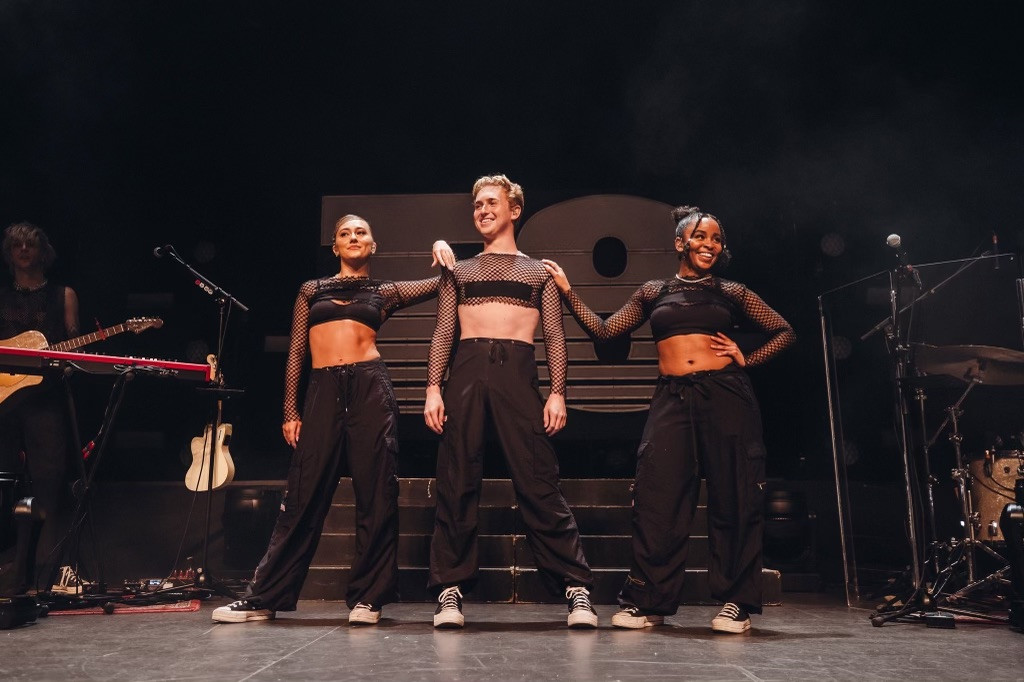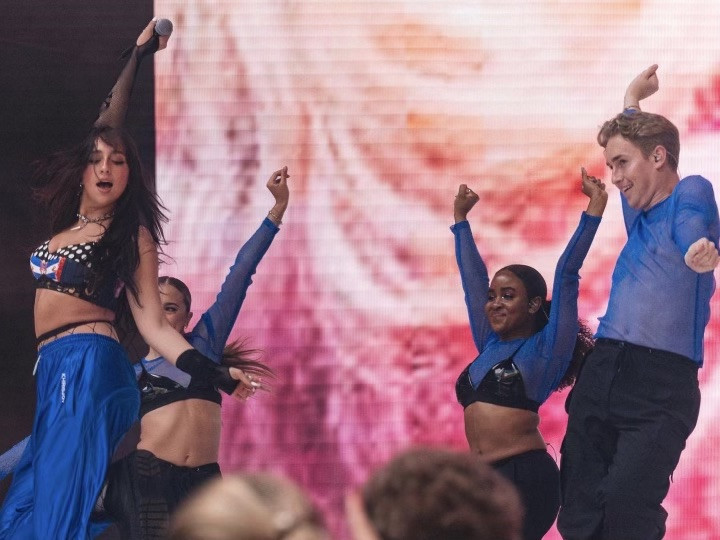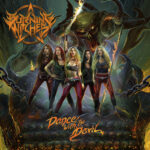 Findlay McConnell performing with Tate McRae on tour, showcasing dynamic stage presence
Findlay McConnell performing with Tate McRae on tour, showcasing dynamic stage presence
For aspiring professional dancers, the dream often involves gracing prominent stages and captivating audiences worldwide. Findlay McConnell, a BFA graduate from the USC Kaufman School of Dance, is living this dream as a dancer for the sensational Tate McRae. Over the past year, McConnell’s journey has been nothing short of extraordinary, marked by three significant tours with the acclaimed singer and dancer: iHeartRadio’s Jingle Ball in December 2021, a UK tour, and an Australia/New Zealand tour during the past summer. This experience provides a fascinating glimpse into the life of a professional dancer working with a major artist and underscores the rigorous training and adaptability required to excel in the contemporary dance industry.
From USC Kaufman Classrooms to Rehearsing with Tate McRae
The path to touring with Tate McRae began with intensive preparation, starting with approximately a week of rehearsals in Los Angeles before each tour commenced. McConnell recounted that the dancers typically initiated rehearsals independently for a couple of days before Tate McRae joined them. This initial phase allowed the dancers to solidify choreography and build synergy before integrating with the headlining artist.
McConnell highlighted McRae’s exceptional aptitude for dance, noting, “Tate doesn’t need a lot of time. She started as a dancer and picks up choreography really quickly. Every choreographer is shocked that it takes Tate only like an hour to learn a number.” This efficiency in learning choreography is particularly advantageous in the fast-paced environment of tour preparations, where time is a premium.
Each performance encompasses a dynamic setlist of 10 to 15 songs, with dancers featuring in over half of the numbers alongside McRae. The collaborative process involves McRae selecting songs for dancer involvement and entrusting choreographers to conceptualize their artistic vision for these segments. However, as with any live performance, the choreography evolves iteratively, adapting to various stage configurations and performance dynamics.
Adapting Choreography and Stage Presence on Tour
Flexibility is paramount for dancers on tour, as stage dimensions and venue layouts can vary significantly. McConnell shared an example from their UK tour, where Wembley Stadium’s stage included a 150-foot walkway. This unique stage element necessitated the incorporation of new choreography to utilize the extended space effectively. “Usually we try to learn all the versions before going on tour. We’re good about having enough rehearsal time,” McConnell explained. “But we always make little tweaks as we go.”
The necessity for on-the-fly adjustments was further exemplified during a performance in Dublin. The venue presented an unusually small stage, barely accommodating the three dancers. During the sound check, the dancers proactively modified the choreography to ensure the performance was seamless within the confined space. This adaptability underscores the practical problem-solving skills and quick thinking essential for professional touring dancers.
 Findlay McConnell and fellow dancers energizing the crowd on Tate McRae's tour stage
Findlay McConnell and fellow dancers energizing the crowd on Tate McRae's tour stage
The Thrill of Live Performance and Audience Engagement
McConnell articulated the distinctive nature of performing as a dancer with a musical artist compared to traditional concert dance settings. “There’s definitely a different aspect when you’re engaging with the crowd. Dancing with Tate, it’s like you’re hyping up the audience,” McConnell observed. The direct interaction with a live audience, characterized by enthusiastic fans holding signs and phones, creates an electrifying atmosphere and a unique dimension to the performance.
This engagement is not just one-way; McConnell mentioned the dancers are given considerable freedom to interact with the audience during performances. “The choreographers trust us, and will say, ‘now you’re going to walk over here, and you can have a moment here.’ They’ll give us counts for how long, and tell us the vibe, but they will let us make our own choices,” he detailed. This blend of structured choreography and improvisational freedom allows for dynamic and personalized performances each night.
Navigating the Realities of Touring Life
Touring offers exhilarating adventures and the chance to experience diverse cultures, a highlight that McConnell enthusiastically embraced. “I like the adventure. The spontaneity of it, the different venues, the fact that you’re traveling the world. I like how fun it is and where it can take you,” he shared. The allure of global travel is a significant perk of touring for many performers, providing enriching experiences beyond the stage.
However, McConnell also candidly addressed the physical demands of touring. The relentless schedule can be taxing on the body, with potential for soreness and fatigue. Despite these challenges, McConnell maintains a positive perspective, stating, “There are some days when you want to lie in bed all day and not talk to anyone, but the pros so outweigh the cons. So what if you’re sore and tired, you’re traveling the world and doing what you love. No complaints.” This resilience and passion are crucial for sustaining a career in the demanding touring industry.
Balancing performance schedules with personal time is also essential for maintaining well-being on tour. McConnell recounted instances of sightseeing during downtime, such as visiting the Sydney Opera House and a wildlife sanctuary in Australia. These moments of “normalcy” amidst a hectic schedule provide a necessary respite and enhance the overall touring experience.
 Findlay McConnell dancing alongside Tate McRae, showcasing their on-stage synergy
Findlay McConnell dancing alongside Tate McRae, showcasing their on-stage synergy
USC Kaufman’s Foundational Role in Tour Preparedness
Reflecting on his journey, McConnell emphasized the pivotal role of his training at USC Kaufman in preparing him for the rigors of touring. The comprehensive and demanding curriculum at USC Kaufman, encompassing diverse dance styles and physical conditioning, proved invaluable. He specifically cited performing in Ohad Naharin’s Minus 16, a physically intense 32-minute piece, as instrumental in building his cardiovascular endurance.
“All styles of dance help all styles of dance, so my Kaufman training definitely helped me to perform and take care of my body,” McConnell affirmed. The holistic approach at USC Kaufman, which integrates practical dance training with knowledge of শরীর mechanics and wellness, equipped him to manage the physical stresses of touring across different climates and time zones. “All the knowledge I gained from Kaufman about our bodies and how to take care of them was tremendously helpful. Especially what to do when you’re changing climates, or if you don’t have the proper space to workout.”
The ability to adapt to varying environmental conditions and maintain peak physical condition is critical for touring dancers. McConnell’s USC Kaufman education instilled in him the responsibility and knowledge to prioritize his health and well-being while navigating the challenges of international tours.
Beyond touring, McConnell’s collaborations with Tate McRae extend to music videos, including “bad ones” and “she’s all i wanna be,” and a live performance on Jimmy Fallon. His experiences have also been featured in Dance Magazine, highlighting his insights into tour life. With upcoming projects with McRae on the horizon, Findlay McConnell’s trajectory exemplifies the exciting and dynamic career pathways accessible to USC Kaufman graduates in the world of professional dance.


